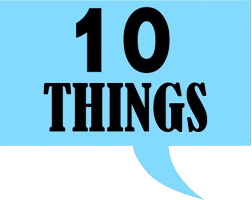In corporate compliance, a guiding principle is the foundation for success or failure: Tone at the Top. This phrase encapsulates the role of senior executives—particularly the CEO—in setting the ethical standards, cultural expectations, and overall mindset toward compliance within an organization. Without a strong, consistent tone from leadership, even the most well-designed compliance programs will falter. However, the entire organization benefits when senior executives actively lead with integrity and prioritize compliance. In this post, we’ll explore the critical role of leadership in fostering a culture of compliance and list practical ways CEOs and other senior executives can demonstrate the appropriate tone at the top.
But Tone at the Top is more than just words. It is about action. What are 10 things a CEO or Senior Executive can do to demonstrate the right Tone at the Top?
1. Lead by Example
Senior executives must model ethical behavior in every aspect of their role. Employees watch how leaders act, especially in challenging situations. When executives consistently demonstrate integrity in decision-making, it reinforces the importance of organizational compliance. To quote the great Jimmy Johnson, “If you are going to talk the talk, you have to walk the walk.”
2. Communicate Clearly and Consistently
Regular, transparent communication about compliance and ethics is key. CEOs and senior executives should emphasize the importance of compliance in emails, internal memos, town halls, and meetings. Compliance messages should be woven into the fabric of all business communications, not just when issues arise.
3. Embed Compliance in Business Strategy
Compliance should not be an afterthought. Senior executives can demonstrate their commitment by ensuring compliance is part of the strategic business planning process. This means considering regulatory risks, ethical implications, and compliance requirements when setting business goals. Compliance must sit at the table and participate in the long-term planning and implementation of your organization’s business strategy. This includes mergers and acquisitions, assessing and planning for emerging risks, and disaster planning.
4. Empower the Chief Compliance Officer
The CEO should ensure that the CCO has direct access to senior leadership and the board of directors. The FCPA Resource Guide, 2nd edition, states, “DOJ and SEC also consider whether a company has assigned responsibility for the oversight and implementation of a company’s compliance program to one or more specific senior executives within an organization. Those individuals must have appropriate authority within the organization, adequate autonomy from management, and sufficient resources to ensure that the company’s compliance program is implemented effectively.” This shows employees that the compliance function has the full backing of the leadership team. The CCO must also have the authority to manage the compliance program effectively.
5. Allocate Adequate Resources to Compliance
An underfunded compliance program signals to employees that compliance is not a priority. CEOs should ensure a sufficient budget, personnel, and technological resources are allocated to the compliance function. This includes funding for training, audits, monitoring, and reporting tools. This requirement also follows Hallmark 4 of the Ten Hallmarks of an Effective Compliance Program that CCOs must have adequate resources, stating “the amount of resources devoted to compliance will depend on the company’s size, complexity, industry, geographical reach, and risks associated with the business.” However, ensure it is not simply budgetary resources but also qualified compliance personnel for your corporate compliance function.
6. Incorporate Compliance into Performance Metrics
Holding employees accountable for compliance should be integrated into the company’s performance metrics and reward systems. Senior executives should ensure compliance-related goals are part of annual performance evaluations and that ethical behavior is rewarded, not just financial performance. Doing business ethically and in compliance should also be incorporated into promotion evaluations. You cannot promote employees who ‘hit their numbers’ but those who work ethically, actively promote the values of the organization, and work to improve the organization’s overall compliance.
7. Deliver Compliance Training Personally
When senior executives participate in compliance training, it sends a powerful message. CEOs and other leaders can demonstrate their commitment by personally delivering training sessions or appearing in training videos. This can be the most powerful statement in many ways, as it reinforces the importance of compliance from the top down.
8. Take Swift and Decisive Action on Compliance Issues.
When compliance violations occur, how leadership responds speaks volumes. CEOs should act swiftly and decisively to investigate and address any issues. Employees need to see that no one is above the law and that compliance breaches will not be tolerated—regardless of an individual’s position in the company. This means justice across your organization and fairness in how consequences are meted out. If you fire employees in Brazil for cheating on their expense accounts, you must fire your top producer in the US for cheating on their expenses.
9. Encourage Open Dialogue and Reporting
Senior executives should actively encourage employees to report compliance concerns without fear of retaliation. The CEO can demonstrate this by promoting the company’s whistleblower program and fostering an environment of openness and transparency. Executives should also be approachable, signaling that compliance concerns will be taken seriously.
10. Align Compensation with Compliance
Executive compensation should reflect the company’s commitment to compliance and ethical behavior. CEOs can lead by example by linking their compensation to compliance performance metrics. This aligns with business success and the company’s commitment to doing things correctly. The same is true for consequences in the form of contractually agreeing to clawbacks and holdbacks of compensation, equity, or options for violations of a corporate compliance program.
Tone at the top is not a one-time initiative. It is an ongoing process that requires continuous attention and reinforcement from senior leaders. When a CEO and other executives lead by example, it sends a clear message that compliance is more than just a regulatory necessity—it’s a fundamental part of how the company does business.
For in-house compliance professionals, fostering this tone from the top is critical to building and sustaining an effective compliance program. It empowers employees to take compliance seriously, encourages ethical decision-making at all levels, and creates an environment where risks are managed proactively.
Ultimately, senior executives’ commitment to ethical leadership and compliance isn’t just good governance—it’s innovative business. By embedding compliance into the company culture through strong leadership, organizations can build trust with stakeholders, protect their reputations, and ensure long-term success.










